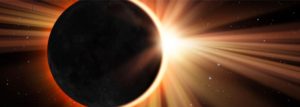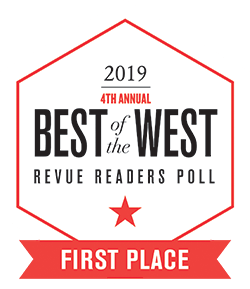
Mark Your Calendars!
August 21, 2017 marks the first time in 99 years that a total solar eclipse will cross the United States coast-to-coast. Grand Rapids Ophthalmology (GRO) wants you to enjoy this event while protecting your precious gift of sight.
Two important things to know:
#1 Safety First
“Some people think it’s a myth that looking directly at an eclipse will cause eye damage,” says Dr. Yosef Gindzin, Retinal Specialist with GRO. “Without proper eye protection this can result in permanent retinal damage and even blindness.” Ordinary sunglasses, even very dark ones, or homemade filters are not safe. The only safe way to view an eclipse is through special-purpose solar filters used in eclipse glasses.
#2 Be Aware of Imposters
“There are fake eclipse glasses available right now,” says Tim Wasko, GRO’s Lab Manager. “These manufacturers are misleading consumers with counterfeit safety labels. It’s important to buy eclipse glasses from companies who conform to international safety standards.” Go to eclipse2017.nasa.gov/ safety for additional information from NASA on how to view the solar eclipse safely and where to get the proper eyewear.
Grand Rapids Ophthalmology wishes you a memorable total solar eclipse on August 21st!

When is the eclipse?
August 21st. West Michigan will start the eclipse at about 1:00, peak around 2:20, and end about 3:45.
Can I use sunglasses to look at it?
No, it’s only safe to view an eclipse directly with certified solar eclipse protection. If you wear prescription glasses, use your eclipse glasses over them.
Where can I get these glasses?
GRO is giving away a minimum of 50 at each location to our Facebook fans on Tuesday and Thursday. They will need to watch our Facebook page to find out when they are being given away. They will be one per person, first come, first serve. Different locations will have different giveaway times. Local libraries will also have them available.
How do I know if my eclipse glasses are safe?
The NASA website has a list of approved suppliers. Solar eclipse glasses should be totally dark when you put them on- only the sun should be visible!
What if I don’t have glasses when the eclipse comes?
You can turn your back to the sun, cross the outstretched fingers of one hand over the other during the partial eclipse and watch the multiple crescent suns that shine through the openings between your fingers.
Why is it not safe to look at the sun even when only a small part of it is visible?
Normally during daylight conditions, the iris contracts so that only a small amount of light passes through the lens and then reaches the retina. This level of indirect sunlight is perfectly OK and the eye has evolved over millions of years to safely see the daylight world under most circumstances. The problem is that the sun’s surface is so bright that if you stare at any portion of it, no matter how small, it produces enough light to damage individual retinal cells. Michigan will not be in path of totality, so the entire sun won’t be blocked. It takes a few seconds for this to happen, but afterwards you will see a spot as big as the solar surface you glimpsed when you look away from the sun at some other scenery. Depending on how long you gazed at the sun and how badly the retinal cells were damaged, this spot will either fade away in time or remain permanent. You should never assume that you can look away quickly enough to avoid eye damage because every person is different in terms of their retinal sensitivity, and you do not want to risk being the one who damages their eyes just to try to look at the sun.
How are eyes damaged by staring at the sun?
Solar retinopathy is a result of too much ultraviolet light flooding the retina. In extreme cases this can cause blindness, but is so painful that it is rare for someone to be able to stare at the sun for that long. Typically, eye damage from staring at the sun results in blurred vision, dark or yellow spots, pain in bright light or loss of vision in the center of the eye (the fovea). Permanent damage to the retina has been shown to occur in ~100 seconds, but the exact time before damage occurs will vary with the intensity of the sun on a particular day and with how much the viewer’s pupil is dilated from decongestants and other drugs they may be taking. Even when 99% of the Sun’s surface (the photosphere) is obscured during the partial phases of a solar eclipse, the remaining crescent Sun is still intense enough to cause a retinal burn. Note, there are no pain receptors in the retina so your retina can be damaged even before you realize it, and by then it is too late to save your vision!
Schedule an Appointment
Schedule an appointment today to experience the GRO difference. Call 616.588.6598 or click here.





















